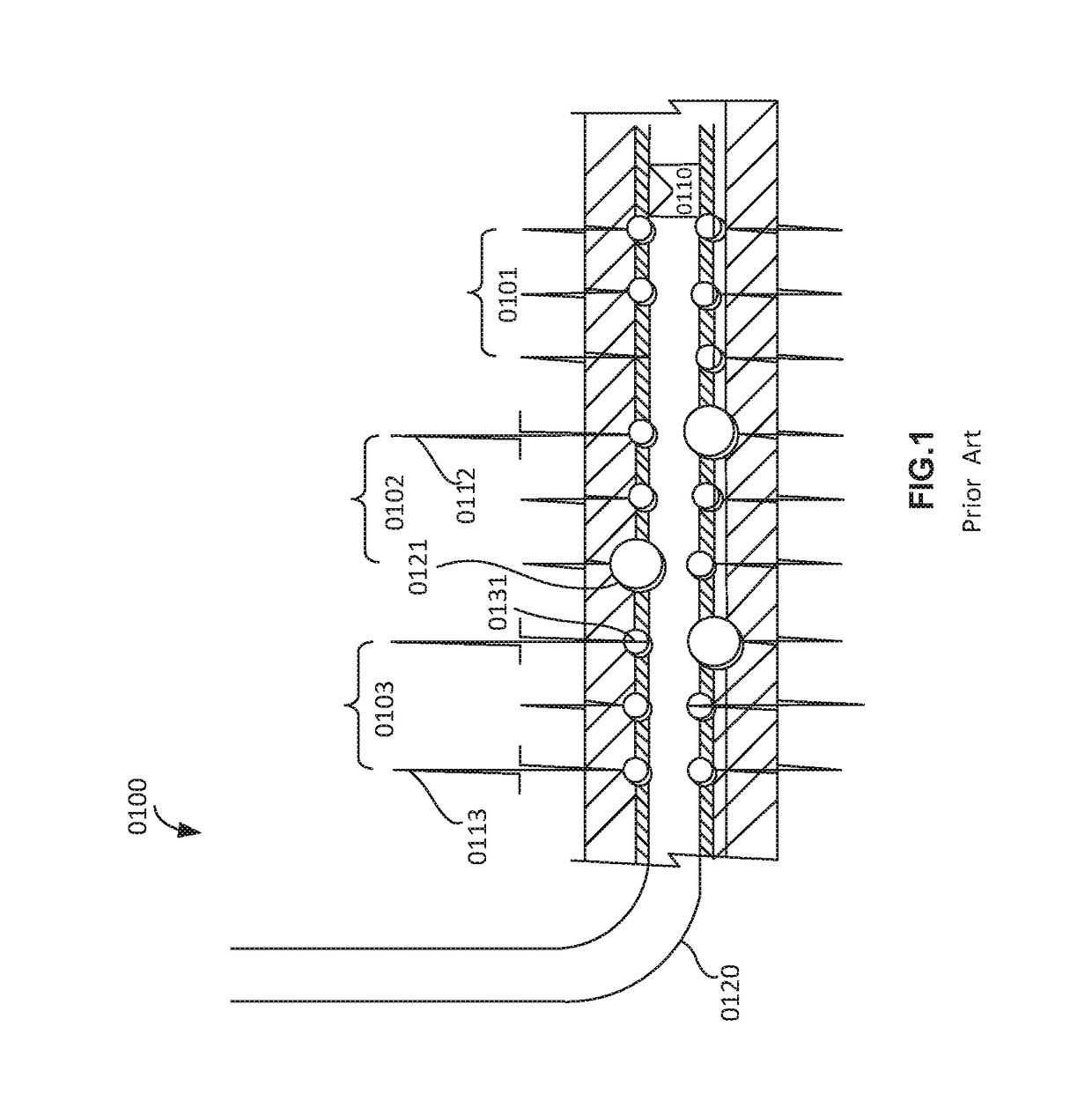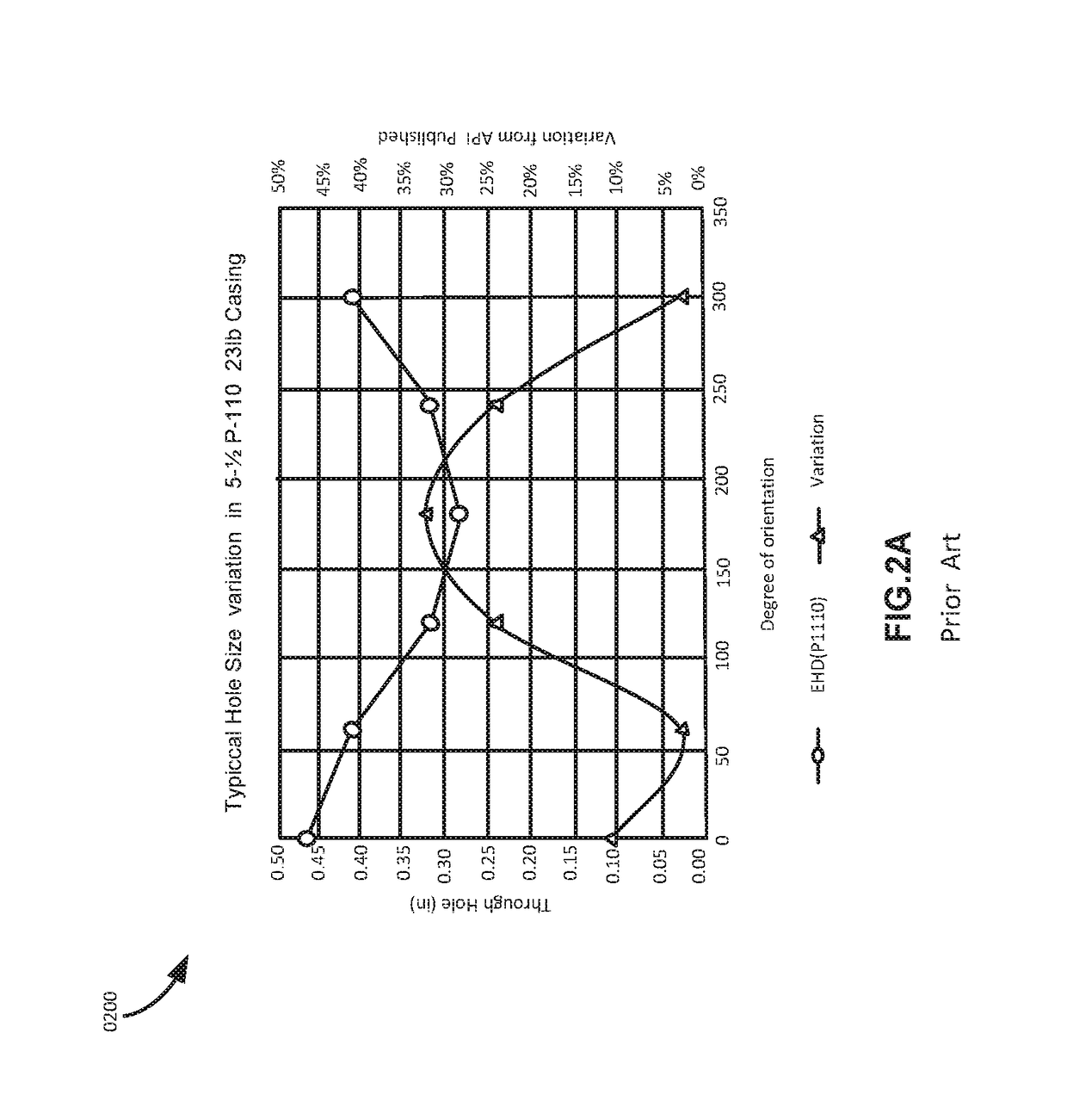Due to the number of factors that determine the entrance
hole size, the variation of the entrance hole diameter (EHD) is large and therefore the design of a stage becomes unpredictable.
If the entrance hole diameter results in a lower diameter such as 0.15 inches, the resulting treatment may result in unintended and weak fractures in a hydrocarbon formation.
The significant and unpredictable over design due to variation in EHD results in unpredictable costs, unreliable results and significant costs.
The large variation in the length and width of the perforation tunnel further causes significant design challenges to effectively treat a hydrocarbon formation.
The variation of EHD makes a stage design unreliable and unpredictable for pressure and treatment of the stage.
The variation of EHD makes a stage design unreliable and unpredictable for pressure and treatment of the stage.
Furthermore, a decentralized gun may create a non-uniform
hole size on the top and bottom of the gun.
Therefore, if any perforation does not participate, then the incremental rate per perforation of every other perforation is increased, resulting in higher perforation friction.
Some of the perforation tunnels with smaller EHD's than intended EHD cause energy and pressure loss during fracturing treatment which reduces the intended pressure in the fracture tunnels.
However, unlimited entry designs are ineffective and mostly time expensive.
However, if the EHD's and penetration depths of tunnels in the clusters have a wide variation, each of the clusters behave differently and the flow rate in each of the clusters is not controlled and not equal.
However, a constant jet at the
tail end of a jet would not create constant diameter and width perforation tunnel.
EQUAfrac®
Shaped Charge does not teach a jet that can produce a constant diameter jet that creates a perforation tunnel with a constant diameter, length and width irrespective of design and environmental factors.
However, current art does not disclose charges that comprise liners with greater than 90 degree
subtended angle.
Furthermore, the diameter and width of the jet may not be constant and therefore a perforation tunnel is created with an unpredictable diameter, length and width.
A large variation in the diameter of the perforation causes a large variation in the perforation loss component.
The prior art as detailed above suffers from the following deficiencies:Prior art systems do not provide for a
shaped charge that can reliably and predictably create entrance holes with a variation less than 7.5% irrespective of the several aforementioned design and environmental factors.Prior art methods do not provide for designing a
shaped charge comprising a liner filled with an explosive such that the resulting variation in the length and the width of perforation tunnel is minimal.Prior art methods do not provide for designing a stage with a pressure variation less than 500 psi between clusters irrespective of the several aforementioned design and environmental factors.
Prior art methods do not provide for creating entrance holes with minimum variation of EHD (less than 7.5%) within a cluster and between clusters so that each of the clusters in the limited entry state contribute substantially equally during
fracture treatment.Prior art methods do not provide for more equal entry (EHD) design that allows for a precise design for effective diversion.
There is also a need for a method that distributes fluid substantially equally among various clusters in a limited entry stage.Prior art methods do not provide a shaped charge capable of creating constant EHD's so that the
tortuosity near a
wellbore can be determined or modelled.Prior art methods do not provide a step down rate test with a controlled and predictable pressure loss due to perforation hole.Prior art charges do not provide for a constant diameter jet (extended portion) between a
tail end and a tip end of the jet so that a constant diameter, constant length perforation tunnel is created along with a constant diameter entrance hole and unaffected by design and environmental factors such as casing diameter, gun diameter, a thickness of the well casing, composition of the well casing, position of the charge in the perforating gun, position of the perforating gun in the well casing, a
water gap in the wellbore casing, or type of the hydrocarbon formation.
While some of the prior art may teach some solutions to several of these problems, the core issue of creating constant hole diameter entrance hole with a variation less than 7.5% has not been addressed by prior art.
 Login to View More
Login to View More  Login to View More
Login to View More 


